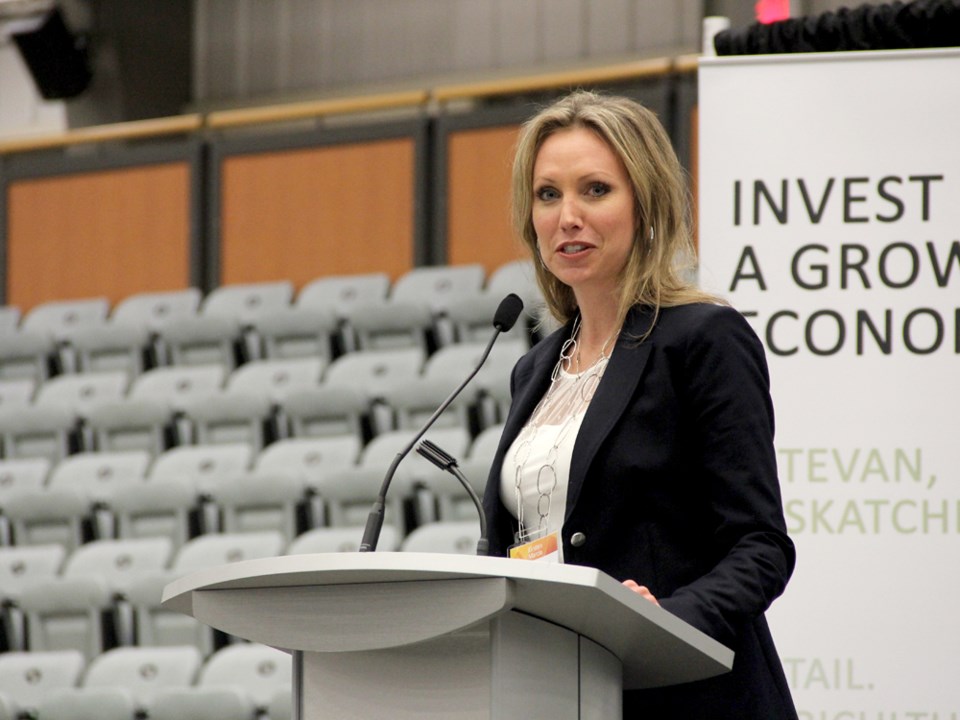While there are a number of factors that make geothermal power an attractive proposal in the Estevan area, perhaps the key that makes Estevan more feasible than other places is that it’s not a big job creator.
DEEP Earth’s geothermal project has an economic case, but a project that doesn’t add many jobs is rarely one that is trumpeted from on high by politicians.
The good news for the project in Estevan is that this city doesn’t need very many new jobs at the moment because it’s having a much more challenging time finding labour than finding jobs for the jobless.
Of course, there are other benefits beyond tapping into a renewable source of clean energy, and that’s what DEEP CEO Kirsten Marcia was presenting to City council during the Nov. 24 regular meeting.
As Marcia and the DEEP team continue canvassing for support both financially and otherwise, she said, “I want the community to understand the opportunities that are associated with this project.”
While presenting the merits of the project to council, Marcia further stressed how a geothermal project may impact central city planning. What she referred to was not the primary benefit of the project, power generation, but to the secondary commodity produced: heat.
Heat is what makes geothermal work, like almost any power source. Marcia said they need to tap into water in the ground that is 120 C, and that is readily available here. Wells about 1,500 metres deep have found water that is 175 C, which she noted stays in its liquid form because it’s under pressure. The Aquistore, which is tied to the carbon capture project at Boundary Dam Power Station as a carbon dioxide storage demonstration project, has two wells and has tested water temperature. Marcia said the results were at least 120 C.
What Marcia said is an important secondary benefit, is the hot water that flows out the other end. That’s called district heating, and it takes advantage of the water that exits the system at 65 C.
In other places where geothermal projects exist, that hot water is used for large buildings, like schools, industrial parks and new residential development.
“We can do that in Estevan. We can have a geothermal project on the outskirts of town and then pump that heat and do whatever we want with it,” said Marcia, noting projects in Iceland pump hot water 20 miles with only a degree of temperature loss.
Other places run the water under sidewalks, which melts any snow or ice.
“As soon as you’ve got discounted heat, you’ve got a number of opportunities,” she said. The hot water has been used for spas and in breweries. In Munich these projects sell power in the summer and heat in the winter.
“The add-on opportunities cannot be overlooked. If we divert just 40 per cent of our outtake water before it’s re-injected into the ground, we can heat a 20-acre greenhouse for free. It’s just wastewater,” said Marcia.
DEEP’s project is expected to produce five megawatts from three production wells.
She said its major drawback, that it doesn’t create a lot of jobs, is no issue in Estevan.
“Some say the worst thing about geothermal is that it doesn’t even have a human footprint, so in a lot of areas where you’re trying to establish a workforce, that’s a negative. In Estevan, where we are looking for employees but we can’t find enough people to work here, the advantage is that we don’t need that to run this project,” noted Marcia.
She said the projects can be built in less than three years, with the potential to create a “quick, easy, nimble” power supply that doesn’t require the purchase of a commodity like coal or natural gas. The Earth doesn’t charge for the hot water. It’s free.
DEEP has its sights set on Estevan, partly because Marcia is an Energy City native and knows the area well as a geologist, but also because the geological knowledge in this area is rich and publicly available thanks to the extensive drilling and mining that has come before.
DEEP is primarily owned by Saskatchewan-based shareholders, who account for 95 per cent of the ownership. The company has raised $2 million in project capital, which has been accompanied by another $2 million in federal and provincial funding. Marcia noted the federal government has provided the company with a letter of intent to fund 50 per cent of the project, which means up to $20 million for the proposed $40 million expected cost.
The money raised has so far led to the completion of a pre-feasibility study.
Marcia emphasized the merits of a zero-emission power project like geothermal are vital in a jurisdiction like Saskatchewan, which is a heavy per capita fossil fuel producer.
If everything goes well, she sees 20 projects in the future for southeast Saskatchewan, a $1 billion industry with Estevan at its centre.
“This will make Estevan the flagship for geothermal in Canada,” she said, noting the industry is wide open in Canada with no real players in the market, unlike the United States, which is the world’s leading producer with the technology.
The project continues to seek investors, as the company moves to complete its $5 million equity raise. Those seeking further information are asked to contact Marcia at 306-261-6979 or see more on the company’s website, www.deepcorp.ca



